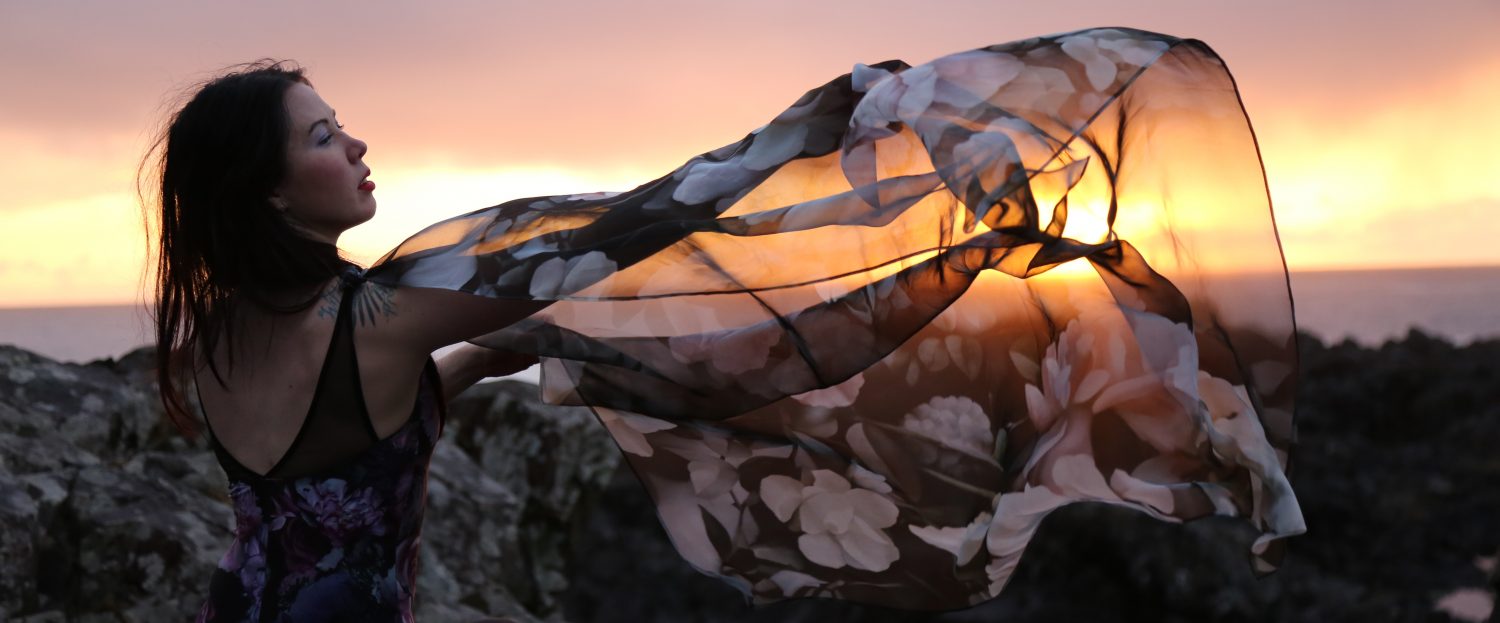
A special guest blog post by Barbara Cioce.
About Barbara: I am a social media manager and I graduated in Philosophy (with a focus on Aesthetics). After university I studied contemporary art management and curating. Nevertheless, my biggest love is definitely Dance. I always danced and now I’m still studying Contemporary Dance and Pole Dance, with passion. However, what defines me is Dance therapy. I’m studying to become a dance therapist. My first objective is to connect Philosophy, Dance and the desire to help other people (and myself) to find a kind of “life-flow” or a “balance”.
What does dancing mean, during this global emergency epoch? (I chose to define this time “epoch” because it is a period of time – even if we don’t know its chronological limits yet – marked by noteworthy events and features related to the COVID issue). I am referring specifically to the experience of dancing on virtual platforms.
My idea was inspired by the book Filosofia della Danza (Philosophy of dance) by the italian Researcher Selena Pastorino.
First of all, what does philosophy of dance mean? Here we do not consider Philosophy as a theory (theorein = greek for “to see”) or as a superstructure that has to be referred to dance. At the same time, dance is not seen as an autonomous entity to be analyzed or as the object of an intellectual act of knowledge. Dance and the body, where dance finds its concreteness, are the primary source of the thought.
The challenge of this Philosophy is, consequentially, to try thinking starting from the body. The Philosophy of dance we are looking for is the thought of the body, which doesn’t mean “about” the body but “intrinsically belonging to the body”. We might define it “embodied thought” , phenomenologically speaking. We refer, in particular, to the theory by Varela, Thompson e Rosch (1991).They consider our lives, our minds and our cognitive processes as something which is essentially “bodily”, behavioural, linked to a specific situation or context. They are, according to the theory, the consequent expression of the interaction of our bodies with the environment. The environment organizes our mind as a concrete and material entity. The idea of mind which emerges, consequently, is that of the mind as a process. As a concrete, lived, experiential process. What makes it possible is our biological and social structure. Our mind is not in our head. The mind is “distributed” in the body and it becomes a cognitive content thanks to the experience of the body in the world. So the only way to explore the mind and to gain a kind of knowledge of it, is by considering the meaning of the lived experience. Our individuality is shaped by our physiological experience and the body is its main vehicle. “Only one world exists for us: the one we are experiencing by these physiological processes that make us what we are.”
In order to understand the specificity of this kind of thought, we’d like to start from the experience of dance. Then, we will try to step a little bit further, thinking about the experience of dance now.
The experience of dance is, according to Pastorino, the experience of being completely involved in what is happening. When we dance, we are completely committed to our movements and gestures. I would say “absorbed” in the “here and now”, without any kind of dichotomy or separation between body and mind.
We do not intend to overturn the idea of explaining reality according to a dualistic perspective, by considering the body the main source of knowledge, instead of the mind/the reason.
We would like to propose an embodied and phenomenological perspective.
According to Pastorino, the experience of dance begins with a seduction. When we step in the room, we feel fascinated, we follow a desire (the desire to learn and to embody the technique we see in our teacher’s body). This desire belongs to us, but it’s not under our control. When we start to practice dance, we feel the experience of a “new body”, very different from what we have always perceived in everyday life. This body is impossible to keep under control or to “dominate.” This body is a rebel. Maybe for the first time in our life, reason has no power. We are not able to mold our body, to give it the shape we are struggling for.
This is the beginning of a learning process, maybe of every learning process.
In virtual/online dance we experience again the phenomenon we have just described. Even if we are used to the practice of dance, even if we are dancers… we find ourselves in front of a screen, coping with anything else unless our body and a screen.
We have to deal with a translation: from the two-dimensional language of the screen to the three-dimensionality of our body. It is not so different from what happens when we start learning dance, or the language of movement. When we listen to the teacher’s instructions, expressed in a verbal language apparently similar to the everyday language, we notice that words have a new and specific meaning for the body.
So virtual dance only apparently seems to deprive us from the carnality of the experience of dance. Virtual dance compels us to face our body in its singularity, feeling the subtle mechanisms of learning and embodying movement.
It is a sort of paradox, we could argue.
There at least other two factors we feel deprived of in the experience of the “COVID- emergency dance.”
The first one is the group. Usually the experience of dancing includes the interaction with a group. Every dancer is in a dynamic relationship with a group of dancers. The groups acts as a point of reference, but it is a limit too. And the limit creates structure, creates sense. Every dancer knows that it is necessary to interact with the other members of the group, in order to create harmony and synchrony. Sometimes the dancer needs to modify his/her time and quality of movement in order to keep the homogeneity and give the public a global and compact view. When we dance “virtually,” we don’t have the physical reference of the group, we don’t have to adjust or adapt ourselves to the others.
The second factor is the absence of the teacher and of the teacher’s touch, physically speaking. Thanks to the touch, even the most gentle and almost imperceptible one, the teacher is able to guide the embodiment of a sequence of rules or of an information. We have no guide in our virtual room. Virtual dance appears to be deprived of rigid structures and rules. Could it be defined “liquid dance”? Like a liquid, it takes the shape of its container. If the only container is the body, then it will be its shape.
Is this liquid dance deprived of the “dignity” of dancing “in presence?”
We don’t think it is a matter of a value judgement that needs to be attributed to dance. We think that we need to “put between brackets” our judgement on the object “dance” and just focus on the process and its development.
We have to re-think about our paradigms. What seems to be irreducible is the body and its potentiality to write with movement. The irreducibility of choreography. It is the anchor of the practice and it is still a solid presence in the “Liquid dance” era. The point is, how should it change according to the new space and time we are coping with?
We would like to propose to start from the idea of “frontality. “We can not escape from frontality in virtual/online dance. In our culture frontally is related to directness, sincerity, clearness. May we re-start from here? Maybe by thinking two-dimensionality or frontality as a meaningful structure for a new (we do not know if also temporary) choreographic language. For example, if we stand in front of our webcam , trying to create a choreography for other people who stand at the same time in front of their cameras, we have to take into account this situation. The spatial reference points are modified, in particular our perception of sagittality and of rotational movements . Everything is flat on the screen. So the urge is to create choreographies starting from this flatness. The limit can become an inspiration, a stimulus. It is possible to focus more on horizontality, for instance. Or it is possible to concentrate on clear contrasts (i.e. : slow/fast movements, light/heavy transitions…) , in order to have a strong impact on the audience and to make the eye of the spectator follow the dancer, as it would have done if the dancer would have been able to move in a three-dimensional space. Furthermore, this modified relation with space has a psychological and emotional meaning too. For example, the lack of rotational movements makes the dancer be exposed to the spectators’ gaze only partially. If the rotational movements are reduced, the body is only partially visible. This gives the idea of a mystery, of something “veiled” that, maybe, is just waiting to be revealed, maybe thanks to a “new gaze.”
Bibliographic reference: Pastorino S., Filosofia della danza, Il Nuovo Melangolo, Genova, 2020


